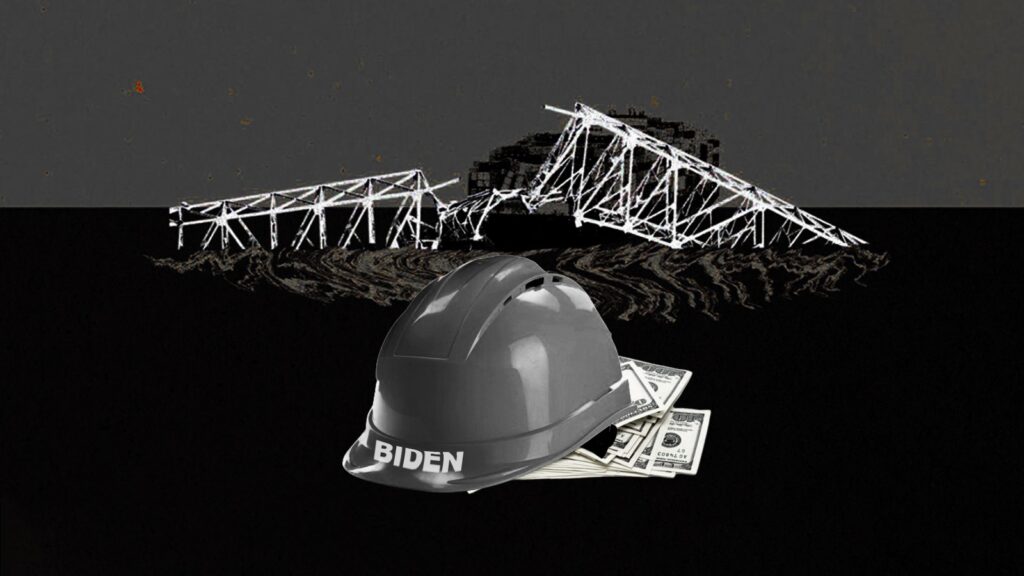Maryland’s governor issued a warning of a “very long road ahead” as cranes and barges commenced the task of removing twisted metal and concrete from the river.
Maryland Governor Wes Moore has cautioned that the road to recovery from the Baltimore bridge collapse will be arduous, even as the Biden administration greenlights $60 million in immediate federal aid following the tragic incident.
The allocated funds are not earmarked for the reconstruction of the damaged bridge itself. Instead, they will go towards the removal of debris from the structure and addressing traffic concerns to restore access to Baltimore’s shipping channels.
On Thursday, massive barges transporting cranes were seen heading towards Baltimore to commence the complex task of extracting twisted metal and concrete from the Patapsco River. This operation comes after a container ship collided with one of the bridge supports, leading to its collapse early on Tuesday.
In a letter addressed to the Federal Highway Administration, the Maryland Department of Transportation expressed that the projected expenses for mobilization, operations, and debris removal related to the bridge collapse amounted to $60 million. The letter emphasized the state’s financial constraints, noting that its emergency funding capacity is insufficient to cover an event of such magnitude.
As the cleanup efforts following the collapse of the 1.6-mile-long bridge persist, the anticipated cost estimate for the disaster is expected to escalate.
President Joe Biden has committed federal funding to cover the “entire cost” of the disaster, providing vital support to Maryland in the wake of this overwhelming tragedy. Maryland Governor Wes Moore expressed gratitude for the federal assistance, acknowledging the significant impact of the incident on the state, the region, and the community of Baltimore.
“This initial emergency relief request is needed for our immediate response efforts, and to lay the foundation for a rapid recovery,” emphasized Moore.
Moore promised that “the best minds in the world” were working on plans to clear the debris. “Government is working hand in hand with industry to investigate the area, including the wreck, and remove the ship,” said Moore.
“This work is not going to take hours. This work is not going to take days. This work is not going to take weeks,” Moore said. “We have a very long road ahead of us.”
US Coast Guard officials stated Wednesday night that barges were en route to the location where the bridge crosses the Patapsco River. However, the exact arrival time of these barges remains uncertain.
The aftermath of the collapse, triggered when a cargo ship struck a support pillar of the bridge after experiencing a power loss early Tuesday, is severe. Divers managed to reach the bodies of two individuals in a pickup truck near the bridge’s central section on Wednesday. Yet, authorities emphasized the necessity of clearing the tangled debris before access can be gained to the bodies of four other missing workers.
The victims were members of a pothole-repair crew who were conducting work on the bridge at the time of the tragic incident.
Officials from the National Transportation Safety Board have embarked on the cargo ship, the Dali, to retrieve data from its electronic systems and documents. Additionally, they intend to conduct interviews with the captain and other crew members.
To mitigate any potential spread of oil that may have leaked into the water, booms have been deployed in the vicinity. Furthermore, state environmental authorities are conducting water sampling activities on Thursday.
The abrupt closure of a major thoroughfare accommodating 30,000 vehicles daily and the subsequent disruption to port operations will not only affect thousands of dockworkers and commuters but also US consumers. The ripple effects are anticipated to be felt through shipping delays impacting various goods.



